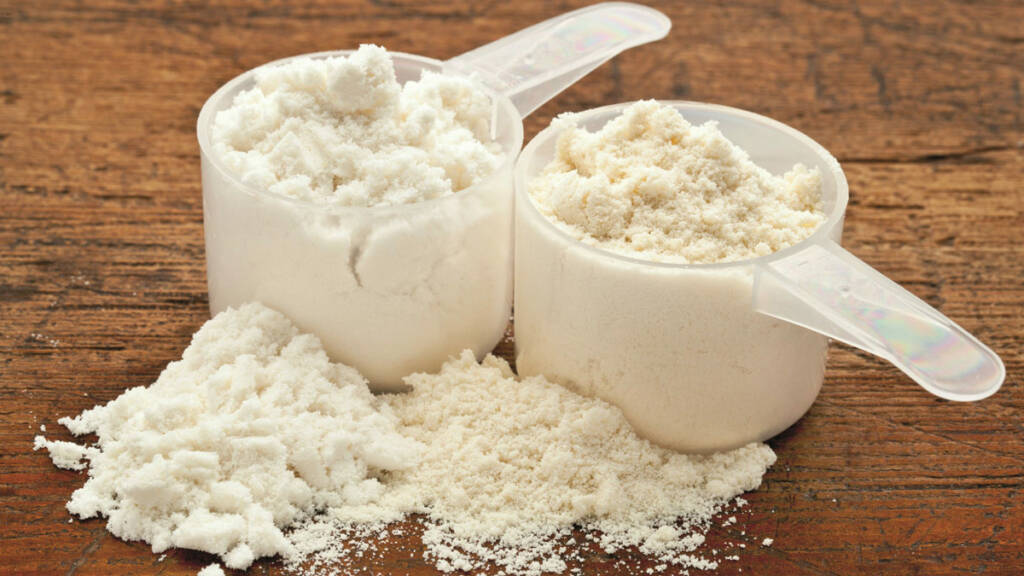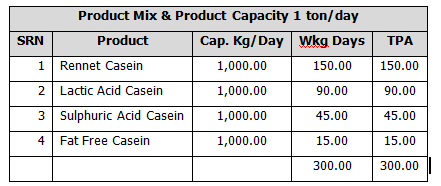Project Report For Casein From Milk
Introduction
Project report for casein from milk is as follows.
The primary protein found in cow’s and buffalo’s milk is casein, which makes up around 80% of the overall protein content. The remaining 20% of the protein content is made up of whey or serum proteins. Approximately 3% of milk contains casein, a combination of phospho-proteins. It is rich in the essential amino acids and contains all the common amino acids. At pH 7.0, the caseins of Alpha, beta, gamma, and K are in decreasing order of mobility.
There are two common processes for producing commercial casein from skim milk: acid precipitation or rennet coagulation. In order to preserve the casein’s quality and keepability, as much of the fat, whey proteins, lactose, and minerals must be eliminated through multiple water washing steps. Casein that has been correctly manufactured and dried is utilized mostly in the food and chemical sectors.

Product & Application of Casein From Milk
Casein can be produced in a variety of grades by precipitating it from skimmed milk with diluted sulfuric acid, hydrochloric acid, or lactic acid. Acid lactate or casein lactate Casein is a naturally self-souring byproduct, albeit it is usually helped by skin milk lactobacillus inoculation. It is used in paints, paper coatings, paper cones, adhesives, rubber compounds, leather, textile support materials, and pharmaceuticals. Rennet Casein is produced using the Rennet process, which employs the precipitation of the Rennet enzyme.

Calcium caseinate, often known as “rennet casein,” has a high ash content and is commonly used in the food sector. This chemical is not used in adhesives.
Project Report Sample On
Casein From Milk
Get Completely Custom Bankable Project Report
Manufacturing Process of Casein from Milk
Skim milk is used to make rennet casein and other types of casein after being pasteurised at 72 °C for 15 – 20 seconds. Small levels of fat are bad for the quality. As a result, it is critical that the milk has been separated efficiently. Renneting is accomplished with the help of the enzyme chymosin found in rennet.
The milk is heated briefly before being chilled to around 30 °C. The rennet is then added. After 15 to 20 minutes, a gel forms. It is chopped, and the coagulum is swirled while being heated to around 60 degrees Celsius. The enzyme must be deactivated at a high temperature. Cooking time is approximately 30 minutes.
Market Potential Of Casein From Milk
The casein market is both vast and exciting. The global casein market is expected to generate more than US$ 1 billion in sales by 2026. The micellar casein market will grow at a 5.9% CAGR through 2026.
Expenses

Product Cost Breakup

Reveneue Vs Expenses

Market Trend

The largest producer of milk worldwide is India. The amount of milk produced is increasing at a 4% annual rate. However, the government has a plan to use scientific methods in animal husbandry, better cattle feed, and better veterinary services to double milk production by 2022. This will enhance the supply of milk that can be used to make products like casein. Due to the expansion of the food processing sector and the demand for speciality chemicals, casein applications and consumption are increasing more quickly.
